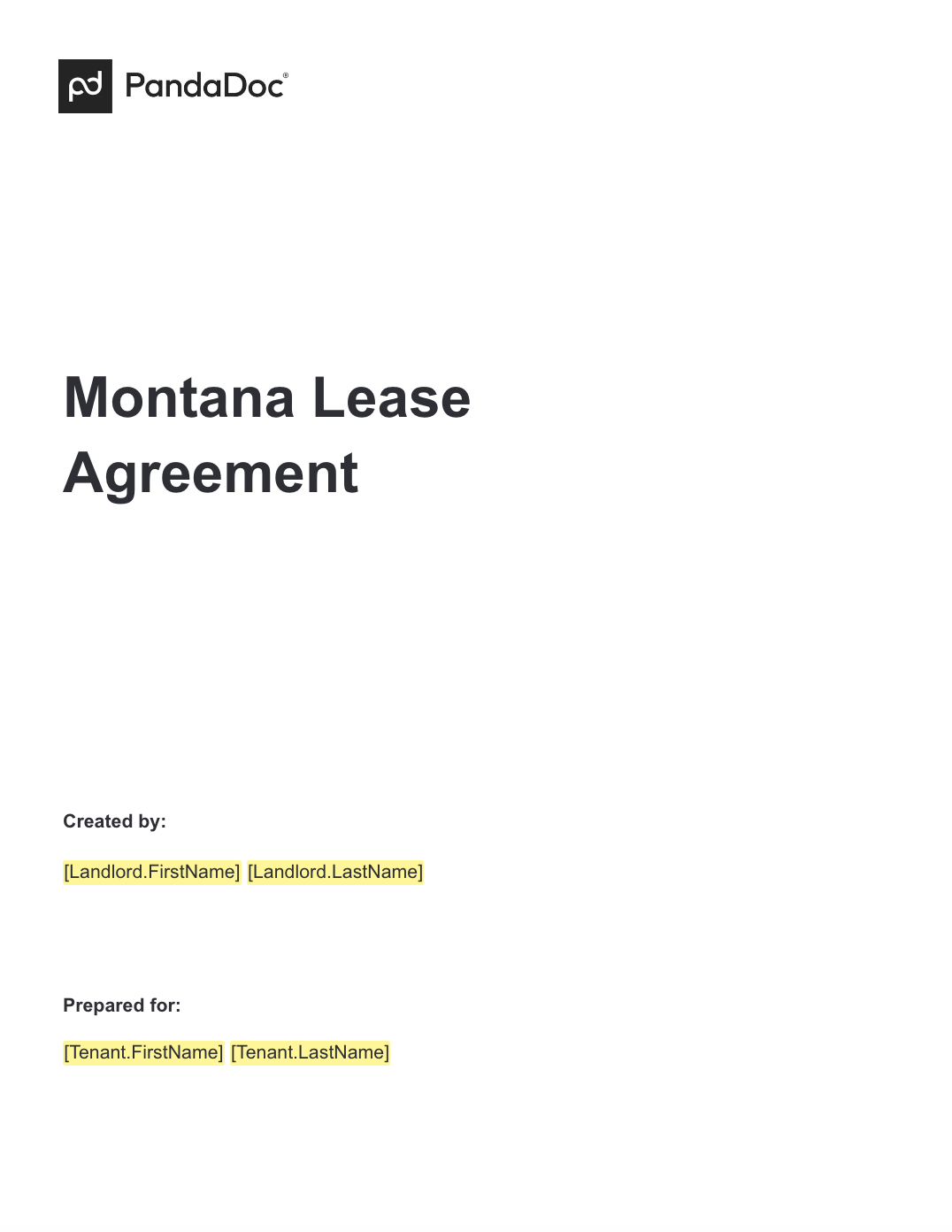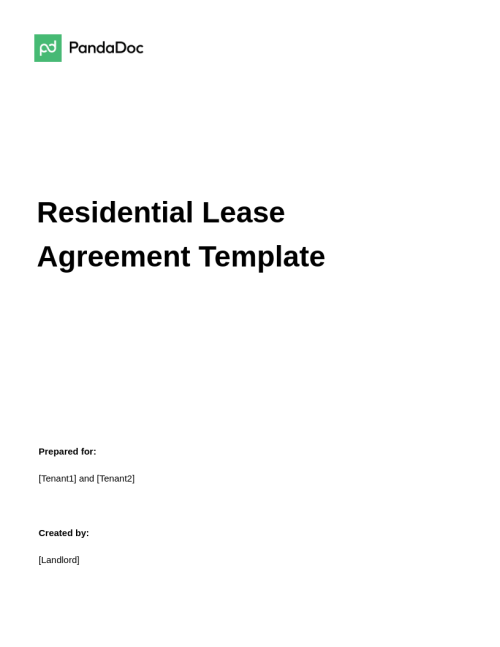Key Takeaways
- Use Montana lease agreement templates to ensure your contract includes all of the state’s legal requirements.
- There are no limitations on the maximum deposit charged.
- Security deposits must be returned within 10 – 30 days, depending on whether there are any deductions.
- All evictions require a notice period before the formal eviction process takes place.
- Landlords must provide at least 24-hour notice before entering a property unless it’s an emergency.
Montana Lease Agreement Templates
Residential Lease Agreement

Residential Rental Agreement
Used 5,261 times
Save time and resources by using this customizable residential rental agreement to create legally binding contracts with your tenants. It includes detailed sections about all aspects of a typical tenancy, including terms, responsibilities, rent, duration, insurance, maintenance, and more.
This agreement template establishes the terms and conditions for renting a residential property in Montana.
Montana Apartment Lease
Tailored for apartment rentals in Montana, this lease agreement template outlines the specifics of leasing an apartment unit, including rent, utilities, and rules governing communal areas.
Montana Room Rental
Designed for renting individual rooms within a property, this template helps landlords and tenants establish clear guidelines for shared living spaces.
Montana Month-to-Month Lease
Use this lease agreement template for short-term rental arrangements in Montana, e.g. vacation rental or student housing.
Commercial Lease Agreement
Crafted for leasing commercial properties in Montana, this template covers essential aspects such as lease terms, rent adjustments, and permitted land use
Lease to Purchase Agreement
Providing a structured framework for lease-to-own arrangements, this agreement template offers tenants in Montana the opportunity to purchase the property in the future.
Sublease Agreement
Facilitating subleasing arrangements, this agreement ensures clarity and professionalism between the original tenant and the subtenant.
Understanding Montana Rental Laws
Lease agreements in Montana are governed by their landlord-tenant laws. By understanding the Montana Residential Landlord and Tenant Act, you can ensure your lease agreements and future actions are in line with these regulations.
| Laws | Name | Description |
| Part 1: § 70-24-101 to § 70-24-114 | General Provisions | Outlines the general provisions of a lease agreement such as what constitutes notice, removing unauthorized persons, regulations surrounding emotional support animals, and more. |
| Part 2: § 70-24-201 to § 70-24-205 | Rental Agreements | Specifies what needs to be included in a rental agreement as well as prohibited provisions. |
| Part 3: § 70-24-301 to § 70-24-322 | Rights and Duties of Parties | Describes the legal responsibilities of each party, such as access to the premises, maintenance, and others. |
| Part 4: § 70-24-401 to § 70-24-422 | Remedies | Outlines the various remedial actions that can be taken to mitigate situations, such as enforcement of the lease, settling a dispute, refusal of access, and termination. |
Security Deposit Limits
- There is no maximum limit on the security deposit in Montana lease agreements.
- Landlords don’t need to provide a receipt.
- Security deposits don’t need to be stored in a specific account, nor do they have to earn interest.
- If there are no deductions, the landlord must return the security deposit within 10 days.
- If there are deductions, the landlord must return the security deposit within 30 days.
- Deductions can be made for damages, cleaning, storage, and disposal of unclaimed property, as well as unpaid rent, late fees, or utilities.
- The tenant can sue for double the security deposit if the landlord doesn’t comply with the notice period or wrongfully withholds funds.
Eviction Procedures
- If the tenant doesn’t pay rent, the landlord can post a written three (3) day notice to pay. If the tenant doesn’t pay, the landlord can proceed with the eviction process.
- If the tenant violates the terms of the lease, including property damage, the landlord can post a written three (3) day notice to cure or quit. If the tenant doesn’t comply, the landlord can proceed with the eviction process.
- For more serious violations, including those not included in the lease, the landlord must post a written 14-day notice to quit or vacate before proceeding with the eviction process.
- If the tenant is involved in illegal activities, the landlord must post a written three (3) day notice to quit. If the tenant doesn’t leave, the landlord can continue the eviction process.
- If tenants violate building, housing, or health and safety codes, the landlord can post a written 14-day notice to vacate or quit. If ignored, the landlord can proceed with formal eviction proceedings.
- If a tenant stays past their lease, the landlord needs to post a written notice, depending on the length of the original lease. Week-to-week leases must provide a seven (7) day notice, and month-to-month agreements must provide a 30-day notice. If the notice is ignored, the landlord can proceed with a formal eviction after the notice period lapses.
Right to Enter (Landlord)
- Landlords must provide a minimum 24-hour notice before entering a property for maintenance, inspections, or showings according to a Montana lease agreement.
- No notice is required in the case of an emergency.
Disclosures
All states have mandatory disclosures that need to appear on the lease agreement, but these can vary. The required disclosures in Montana lease agreements are:
- Lead-based paint disclosure (only for property built before 1978)
- Details of authorized agents
- Move-in checklist
- Methamphetamine contamination disclosure
- Mold disclosure



